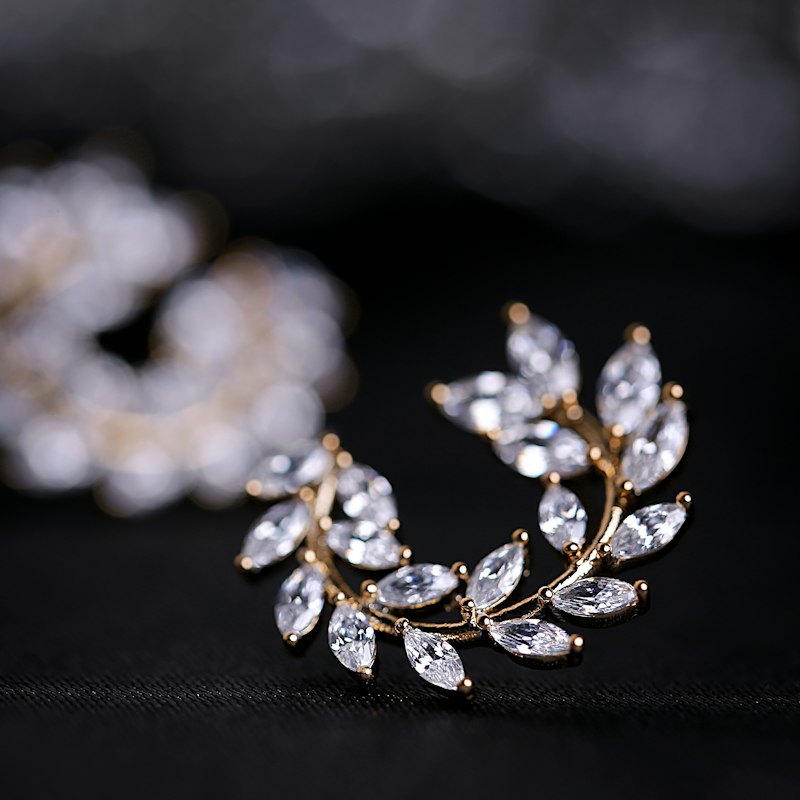Roman Gemstone Splendor: Myths and Beliefs Explored
Have you ever wondered about the fascinating world of gemstones? In ancient Rome, these exquisite stones held a special place in their culture, surrounded by myths and beliefs that added to their allure. Let’s delve into the captivating realm of Roman gemstone splendor and uncover the stories behind these precious treasures.
One of the most renowned gemstones in Roman mythology is the amethyst. Romans believed that this beautiful purple stone possessed the power to ward off drunkenness and intoxication. They often wore amethyst jewelry or even drank from amethyst cups in the hopes of avoiding the effects of excessive wine consumption.
Another gemstone shrouded in legend is the emerald. Revered for its vibrant green hue, emeralds were considered symbols of fertility and rebirth. Romans associated this gem with Venus, the goddess of love and beauty. It was believed that wearing emeralds would attract love and strengthen relationships.
Rubies, with their striking red color, held a special place in Roman society as well. These fiery gemstones were associated with Mars, the god of war. Romans believed that rubies had protective powers and could grant victory in battle. Warriors often adorned themselves with ruby amulets or included the gemstone in their armor.


The world of Roman gemstone splendor is a captivating tapestry of mythology, beliefs, and beauty. From the enchanting amethyst to the alluring emerald, each gem carried its own significance and power in ancient Roman culture. Explore the wonders of these gemstones and discover the magical stories that have fascinated people throughout history.
Unearthing the Secrets: Roman Gemstones Reveal Fascinating Myths and Beliefs
When you think of ancient Rome, images of grand architecture, mighty emperors, and epic battles may come to mind. However, hidden beneath the surface lies a treasure trove of secrets waiting to be discovered. Roman gemstones, in particular, hold fascinating tales of myths and beliefs that captivate historians and enthusiasts alike.
These precious gemstones, including amethysts, emeralds, and sapphires, were more than just objects of beauty for the Romans. They held deep symbolic meaning and were believed to possess magical properties. For instance, the lustrous emerald was associated with Venus, the goddess of love and beauty. It was thought to bring harmony and fertility to its owner, making it a sought-after gemstone among Roman nobility.
Another gemstone that intrigued the Romans was the enchanting amethyst. This purple-hued stone was believed to ward off drunkenness and intoxication, earning it a reputation as a symbol of sobriety and wisdom. Emperors and senators often adorned themselves with amethyst jewelry as a sign of power and self-control.
In addition to their symbolic significance, Roman gemstones played a pivotal role in religious rituals and superstitions. The radiant red ruby, associated with Mars, the god of war, was thought to grant protection and courage in battle. Warriors would carry these gemstones into combat, believing they held mystical powers that shielded them from harm.
The Romans also attributed healing properties to certain gemstones. The serene blue sapphire was believed to possess medicinal qualities and could cure ailments of the mind and body. It was considered a talisman of tranquility, bringing peace and clarity to those who possessed it.
As we delve deeper into the world of Roman gemstones, we uncover a rich tapestry of mythology and belief. These exquisite jewels were not only objects of adornment but also conduits to another realm, connecting the wearer to the gods and their divine powers.
Roman gemstones offer a glimpse into the intricate web of myths and beliefs that shaped ancient Roman civilization. Their allure goes beyond mere aesthetics, encompassing profound symbolism and mystical properties. By unearthing these secrets, we gain a deeper understanding of the Romans’ cultural and spiritual practices, reminding us that even in the vastness of history, the beauty of human imagination endures.
Journey into the Past: Exploring the Enchanting World of Roman Gemstone Legends
Step back in time and embark on a fascinating journey into the past as we delve into the enchanting world of Roman gemstone legends. Brace yourself for an exploration filled with awe-inspiring tales, captivating myths, and shimmering gemstones that held immense significance in ancient Rome.
In the heart of the Roman Empire, gemstones were cherished for their beauty, believed to possess mystical powers, and worn as symbols of status and wealth. Each gemstone had its own story to tell, captivating both the wearer and those who beheld its radiance.
One such legendary gemstone was the Amethyst, known for its mesmerizing purple hue. Romans believed that this stone protected them from intoxication and kept a clear mind. It was even thought to ward off evil spirits. Imagine the allure of wearing a stunning amethyst pendant, not only for its exquisite beauty but also for the perceived protection it provided.

Ruby, with its fiery red hue, was considered the king of gemstones. It represented power, passion, and courage. Romans believed that wearing a ruby enhanced vitality and bestowed good fortune upon the wearer. To wear a ruby was to exude strength and charisma, commanding attention wherever one went.
The magical properties of gemstones extended beyond the physical realm for the Romans. They believed that gemstones could influence destiny and grant protection from harm. For instance, the Tiger’s Eye gem was believed to provide courage and protection during battles, enhancing the warrior spirit within.
As we journey deeper into the captivating world of Roman gemstone legends, we uncover a tapestry woven with symbolism, beliefs, and a reverence for the natural world. The Romans’ fascination with gemstones continues to inspire awe and wonder even in modern times, reminding us of the enduring allure of these precious treasures that have transcended centuries.
From Amulets to Adornments: How Roman Society Embraced Gemstones in their Mythology and Culture
Introduction:
Can you imagine a world without gemstones? For the ancient Romans, these precious stones held a significant place in their mythology and culture. From serving as powerful amulets to adorning the elite, gemstones played diverse roles in Roman society. Let’s delve into the captivating details of how the Romans embraced these mesmerizing treasures.
Amulets and Their Protective Powers:
Gemstones were cherished by the Romans for their perceived protective powers. They believed that certain gems had the ability to ward off evil spirits and bring good fortune. For instance, carnelian was regarded as a powerful amulet against envy and ill wishes, while amethyst was thought to prevent drunkenness and promote clarity of mind. These gemstones were fashioned into various forms like pendants and rings, allowing individuals to carry their protective energies with them at all times.
Symbolism in Jewelry and Clothing:
Gemstones played a crucial role in Roman fashion, adorning both men and women. The elite class displayed their wealth and status by wearing intricate jewelry encrusted with vibrant gemstones. Rubies, emeralds, and sapphires were particularly favored for their beauty and rarity. Jewelry was not merely an aesthetic statement but also carried symbolic meanings. For example, a pearl necklace represented purity and femininity, while an onyx ring symbolized authority and power. Such adornments became a way for Romans to express their identity and social standing.
Religious and Mythological Significance:
In Roman mythology, gemstones were closely associated with gods and goddesses, often serving as their sacred offerings. The Romans believed that gemstones possessed divine qualities and could establish a connection between mortals and deities. For instance, the opalescent moonstone was dedicated to the Moon Goddess, Diana, while the fiery red garnet was associated with Mars, the God of War. Gemstones were used in religious rituals and were even embedded in statues and temples to enhance their spiritual significance.
Legacy and Influence:
The Roman fascination with gemstones left an enduring impact on Western culture. The tradition of wearing birthstones can be traced back to ancient Rome, where gemstones were assigned to each month as a symbol of protection and good fortune. Even today, gemstones continue to captivate our imagination and adorn our lives, reminding us of the rich heritage passed down from the Roman civilization.
Conclusion:
From protective amulets to symbols of wealth and religious devotion, gemstones played a multifaceted role in Roman society. Their use in mythology, fashion, and spirituality reflects the Romans’ deep connection with these captivating treasures. The legacy of their adoration for gemstones continues to shine brightly in our modern world, reminding us of the enduring allure and cultural significance they hold.
Unlocking the Power: Roman Beliefs Surrounding Gemstones and their Supernatural Abilities
Have you ever wondered about the hidden powers that ancient civilizations attributed to gemstones? Well, the Romans were no exception! The Roman culture was deeply rooted in beliefs and superstitions, and gemstones played a significant role in their spiritual practices. Let’s delve into the fascinating world of Roman beliefs surrounding gemstones and explore their supernatural abilities.
One of the most revered gemstones in ancient Rome was the amethyst. Romans believed that this purple-hued stone possessed protective qualities against intoxication. They often crafted drinking vessels from amethyst in the hope that it would prevent them from getting drunk. It was believed that the amethyst’s vibrant color came from the god of wine, Bacchus, pouring his wine over a clear crystal. This association with the god of wine further solidified its reputation as a stone of sobriety.
Another gemstone that captured the Romans’ imagination was the emerald. For them, emeralds symbolized fertility and rebirth. These radiant green stones were believed to be connected to Venus, the goddess of love and beauty. Romans associated emeralds with growth, rejuvenation, and even immortality. Wearing emerald jewelry was thought to enhance one’s ability to find or maintain love and bring harmony to relationships.
Ruby, with its fiery red color, held great significance in Roman culture. It was considered the stone of vitality and passion. Romans believed that wearing rubies could invigorate the body and ignite the flames of desire. Moreover, rubies were associated with Mars, the god of war. Warriors adorned themselves with ruby amulets, believing these stones would grant them strength, courage, and protection in battle.
Diamonds, known as “adamas” in Latin, were also highly valued by the Romans. They believed that diamonds possessed extraordinary powers, including healing ailments, warding off evil spirits, and even providing protection during battles. Romans believed that diamonds were fragments of stars or tears of the gods, making them highly coveted gems associated with divine energy.
The Roman fascination with gemstones extended beyond their physical properties. They believed that these precious stones contained supernatural abilities that could impact various aspects of life. From protection against intoxication to attracting love and promoting vitality, gemstones held a mystique that intertwined seamlessly with the spiritual beliefs of ancient Rome.


